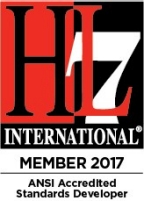Laboratory Result Reporting
Certain diseases and events are declared to be communicable and/or dangerous to the public and are to be reported to the state or local health department by all hospitals, physicians, laboratories and other persons knowing of or suspecting a case in accordance with the provision of the statutes and regulations governing the control of communicable diseases in Tennessee (T.C.A. §68 Rule 1200-14-01-.02).
Laboratories can currently report either:
- Manually, or
- Via Electronic Laboratory Reporting (ELR)*
Reporting by laboratories does not nullify the health care provider’s or institution’s obligation to report these diseases and conditions, nor does reporting by health care providers nullify the laboratory’s obligation to report.
The Reportable Diseases and Events List is updated annually. A list of these conditions, diseases, and events can be found by visiting the Tennessee Department of Health Reportable Diseases site.
* In TN, ELR is the electronic submission of laboratory results thought to be indicative of a reportable condition, disease, or event, as described by the TDH, using interoperability standards.
Manual Lab Submission
Manually submitted lab reports can be faxed or mailed to either:
- The TN Department of Health, Communicable and Environmental Diseases and Emergency Preparedness central office or,
- The local health department.
Please visit the Tennessee Department of Health Reportable Diseases site for timelines, mailing addresses, and fax numbers for the state and local health offices.
Manual lab reports submitted to the health department must contain certain minimum data elements, if known. For a list of those data elements, click HERE.
Confluence document found here: Proposed HHS ELR Submission Guidance using HL7 v2 Messages - Orders & Observations - Confluence.
Electronic Laboratory Reporting (ELR)
In TN, ELR is the electronic submission of laboratory results thought to be indicative of a reportable condition, disease, or event, as described by the TDH, using interoperability standards. The following sections detail the acceptable file formats, vocabulary, and identifiers accepted by TDH.
File Formats:
TDH requires the use of Health Level 7 International (HL7) version 2.x messages for electronic transmission of ELR data.
The preferred format of ELR data is HL7, Version 2.5.1 Implementation Guide: Electronic Laboratory Reporting to Public Health Release 1 (US Realm) with errata. For a copy, please click HERE.
TDH will also receive ELR messages following the Implementation Guide for transmission of Laboratory-Based Reporting of Public Health Information using Version 2.3.1 of the HL7 Standard Protocol (dated March 2005). For a copy, please contact edx@cdc.gov.
For information on HL7 standards and specifications, please click HERE.

Vocabulary:
TDH requires the use of standard vocabulary when appropriate. Examples of expected standard vocabulary include:
- Logical Observation Identifiers Names and Codes (LOINC)
- Systemized Nomenclature of Medicine (SNOMED)
- Unified Code for Units of Measure (UCUM)
Please visit : PHINVADS and Reportable Condition Mapping Tables (RCMT) or LOINC for more information on standard vocabulary and the Reportable Conditions Mapping Tables (RCMT).
Identifiers:
TDH requires the use of identifiers when appropriate. Examples of expected identifiers include:
- Object Identifier (OID)
- Clinical Laboratory Improvement Amendments (CLIA)
- National Provider Identifier (NPI)
ELR Message Validation:
TDH uses free, on-line ELR message tools to assist with validation. Examples include:
- CDC’s “Message Evaluation and Testing Service (MET) METS - Message Evaluation and Testing Service | CDC
- NIST HL7 2.5.1 Validation Suite for certifying 2014 Edition Meaningful Use EHR technology
ELR On-Boarding:
For public health, clinical, and regional laboratories not associated with Meaningful Use, please contact the Communicable and Environmental Diseases & Emergency Preparedness Surveillance Systems and Informatics Program at CEDS.Informatics@tn.gov for on-boarding information. For more information on ELR on-boarding, including the on-boarding process, on-boarding checklist, frequently asked questions, business rules, and message format and vocabulary, please see the ELR Onboarding Handbook.
ELR Registration:
The on-boarding process to exchange ELR data with the Tennessee Department of Health (TDH) requires registration by each potential trading partner in the TDH Trading Partner Registration (TPR) system. The TPR provides documentation that can be utilized for Meaningful Use (MU) attestation, and allows users to view their progress from end to end through the use of milestone letters documenting the on-boarding process. If you have not yet registered with TDH in the TPR system and you wish to send ELR to TDH, please contact MU.Health@tn.gov for assistance. For more information on ELR on-boarding, including the on-boarding process, on-boarding checklist, frequently asked questions, business rules, and message format and vocabulary, please see the ELR Onboarding Handbook .
Meaningful Use
ELR is a Public Health Menu Item for Meaningful Use Stage 1 and a Core Item for Meaningful Use Stage 2. Please click HERE for more information about Meaningful Use and the other Public Health Options.
Additional Information and Useful Links
Additional Information:
For more information or to receive a draft copy of our trading partner agreement, please contact the Communicable and Environmental Diseases & Emergency Preparedness Surveillance Systems and Informatics Program ELR team at CEDS.Informatics@tn.gov.
For Frequently Asked Questions (FAQ), please click HERE.
For an ELR Fact Sheet, please click HERE.
Useful Links: